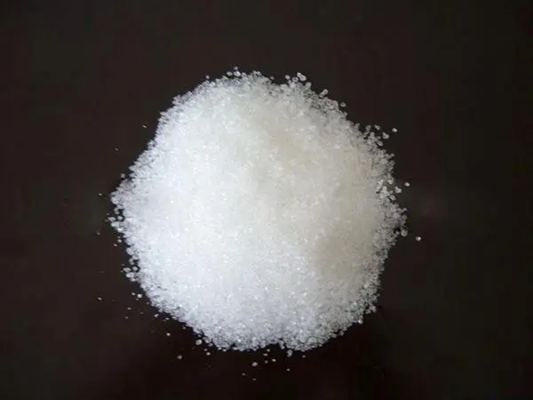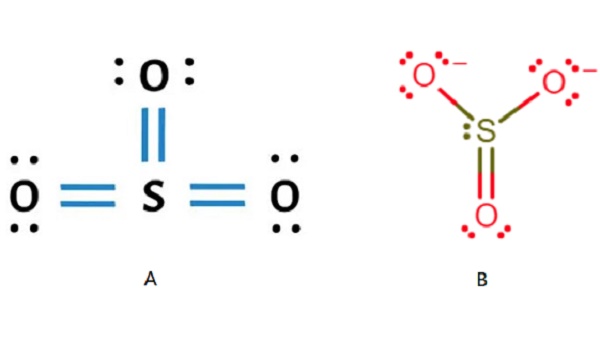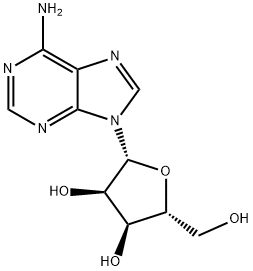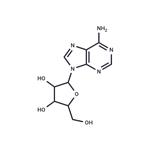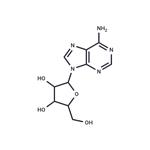The Biological activity, Drug Interactions, and Contraindications of Adenosine.
Nov 17,2023
Description
Adenosine, an ATP-derived nucleoside, is a critical modulatory factor accumulated in the TME. The hypoxic condition, ischemia, and inflammation can increase the concentration of adenosine in TME. The high concentration of adenosine can be reduced in three ways: Adenosine kinase can phosphorylate adenosine to AMP, which is oxygen-dependent and, in the hypoxic environment, can be inhibited. Adenosine deaminase (ADA) can deaminate it to inosine. Adenosine can also be secreted into the extracellular space via bidirectional nucleoside transporters.

Biological activity
First identified as a potent vasodilator in 1929 by Drury and Szent-Gyorgi, adenosine was subsequently shown to mediate its effects on cells via the engagement of specific receptors (A1, A2a, A2b and A3 (REFS 2,3)). Adenosine is a ubiquitous extracellular signaling molecule and plays a fundamental role in the regulation of coronary microcirculation through activation of adenosine receptors (ARs). Various enzymes and nucleoside transporters regulate this molecule for its balance between intra- and extracellular compartments. As a nucleoside derived primarily from the extracellular hydrolysis of adenine nucleotides, it is a potent regulator of inflammation[1-2]. Adenosine mediates its effects on inflammatory cells by engaging one or more cell-surface receptors. The expression and function of adenosine receptors on different cell types change during rheumatic diseases, such as rheumatoid arthritis (RA).
Uses
Adenosine is a prescription drug used for conversion to sinus rhythm of paroxysmal supraventricular tachycardia (PVST), including that associated with accessory bypass tracts (Wolff-Parkinson-White Syndrome). In addition, promoting the adenosinergic system may be an essential factor in Multiple sclerosis pathophysiology and is considered a promising therapeutic target for this disease[3].
Drug Interactions
Amlodipine: (Moderate) Use adenosine with caution in the presence of calcium-channel blockers due to the potential for additive or synergistic depressant effects on the sinoatrial and atrioventricular nodes.
Amlodipine; Atorvastatin: (Moderate) Use adenosine with caution in the presence of calcium-channel blockers due to the potential for additive or synergistic depressant effects on the sinoatrial and atrioventricular nodes.
Amlodipine; Benazepril: (Moderate) Use adenosine with caution in the presence of calcium-channel blockers due to the potential for additive or synergistic depressant effects on the sinoatrial and atrioventricular nodes.
Amlodipine; Celecoxib: (Moderate) Use adenosine with caution in the presence of calcium-channel blockers due to the potential for additive or synergistic depressant effects on the sinoatrial and atrioventricular nodes.
Only some drug interactions are listed here.
Contraindications
A contraindication is a specific situation in which a medicine, procedure, or surgery should not be used because it may be harmful to the person. The contraindication of Adenosine concludes:
Hypersensitivity.
2nd or 3rd-degree atrioventricular block (AV block) (except those on pacemakers).
Sinus node disease, such as sick sinus syndrome or symptomatic bradycardia (except in patients with a functioning artificial pacemaker).
Adenoscan: Contraindicated in bronchoconstrictive or bronchospastic lung disease (asthma).
References
[1] Cronstein, Bruce N. , and M. Sitkovsky . "Adenosine and adenosine receptors in the pathogenesis and treatment of rheumatic diseases." Nature Research 1(2017).
[2] MLck, Christina , et al. "The A2b adenosine receptor antagonist PSB-603 promotes oxidative phosphorylation and ROS production in colorectal cancer cells via adenosine receptor-independent mechanism." Cancer Letters 383.1(2016):135-143.
[3] Safarzadeh, Elham , et al. "The role of adenosine and adenosine receptors in the immunopathogenesis of multiple sclerosis. " Inflammation Research 65.7(2016):1-10.
- Related articles
- Related Qustion
- Function and application of adenosine in cancer treatment? Dec 16, 2024
Adenosine is a purine nucleoside that can be used as a diagnostic and therapeutic agent (for the treatment of supraventricular tachycardia (SVT)).
- What does adenosine do for your body? Aug 27, 2024
Adenosine terminates AV nodal-dependent arrhythmias like atrioventricular nodal reentrant tachycardia (AVNRT) and atrioventricular reentrant tachycardia (AVRT).
- Adenosine: Physiology, Clinical Applications and Safety Jul 13, 2023
Adenosine is a nucleoside involved in cellular function. It has antiarrhythmic effects, potential cardioprotective properties, and can cause side effects when administered.
Sodium pyruvate is a natural intermediate product produced during cellular metabolism and is commonly used in buffer solution media for biochemical applications.....
Nov 17,2023Biochemical EngineeringSulfur trioxide is not only environmentally harmful but also highly corrosive and poses a significant threat to the safe operation of coal-fired power plants.....
Nov 17,2023Inorganic chemistry



